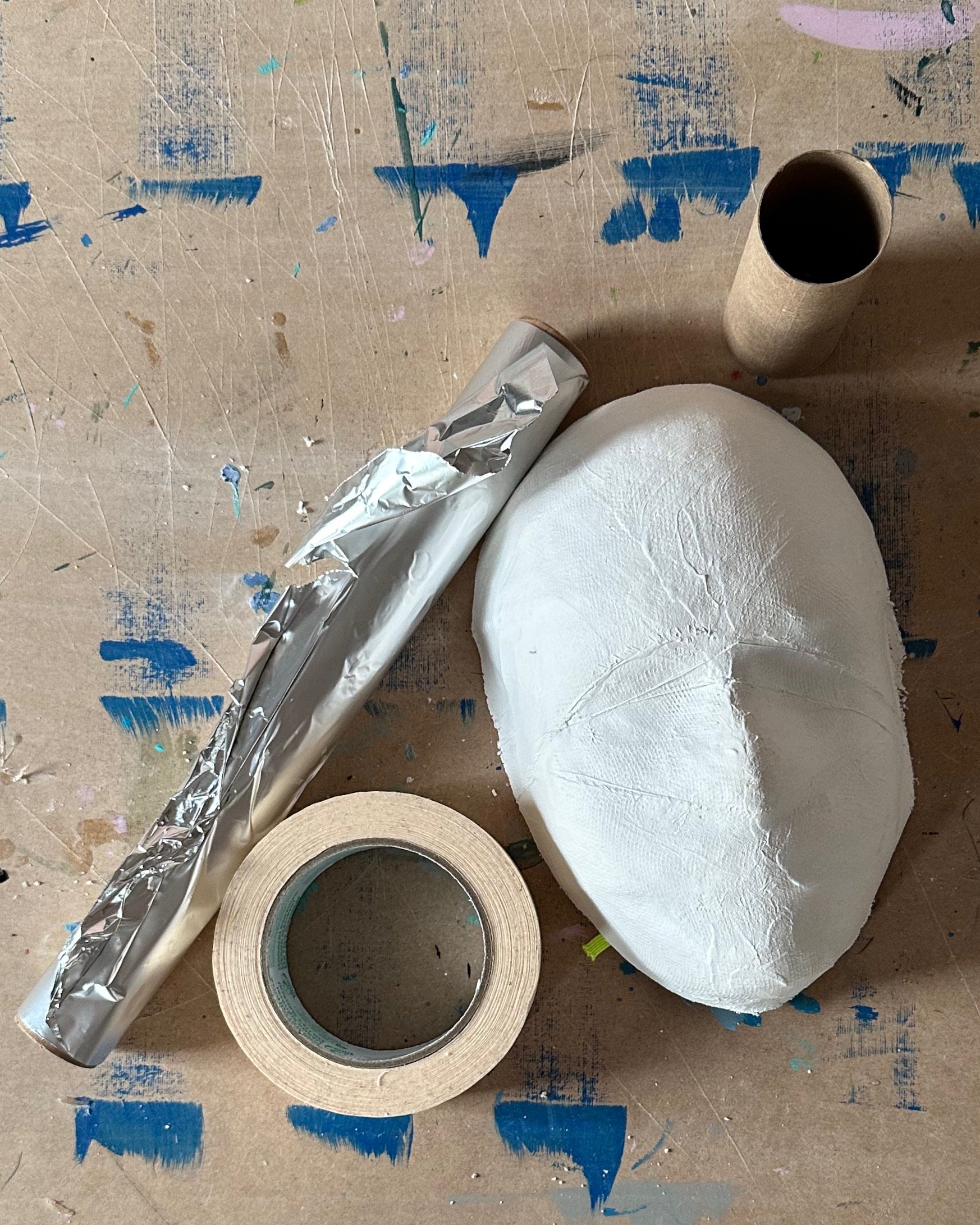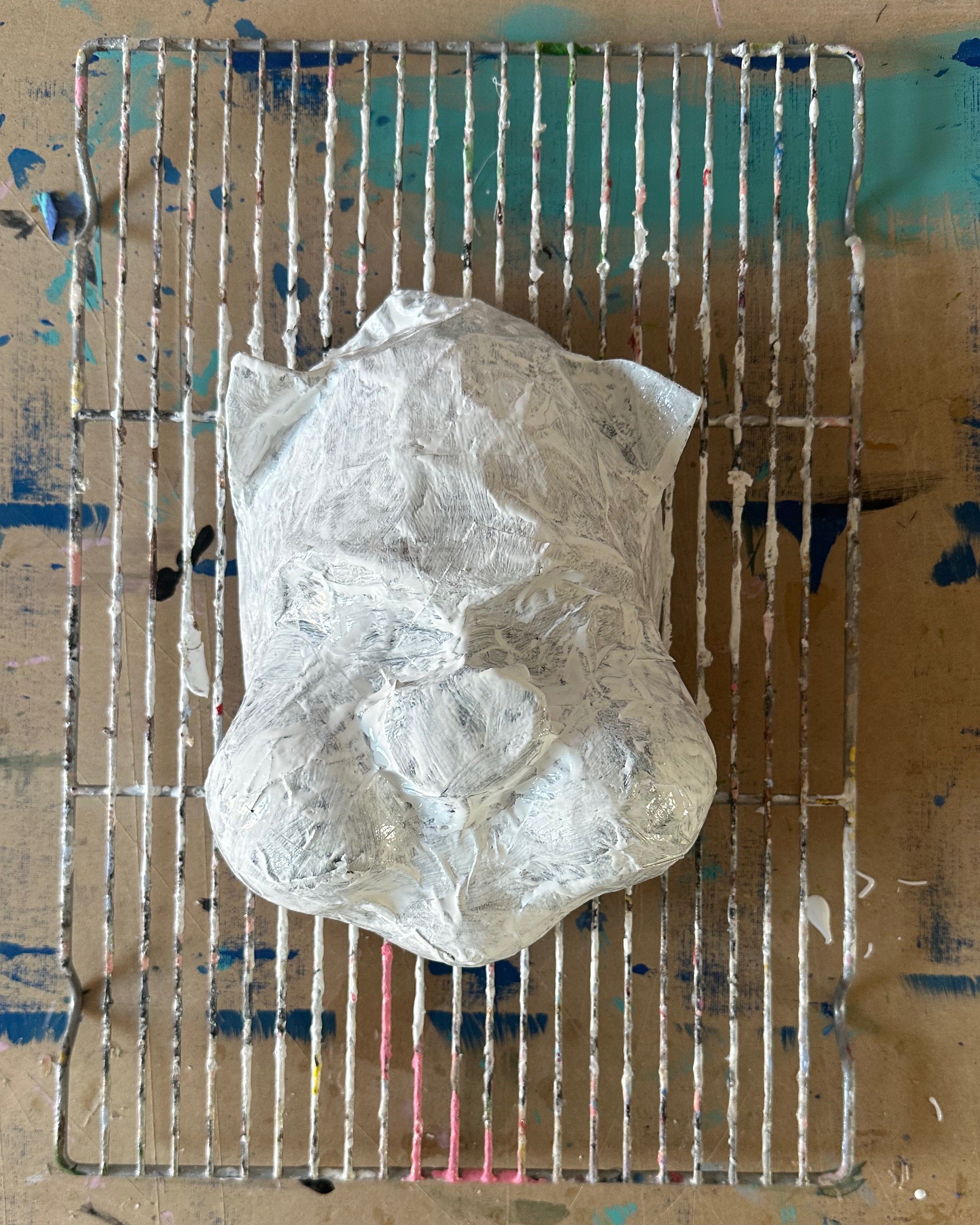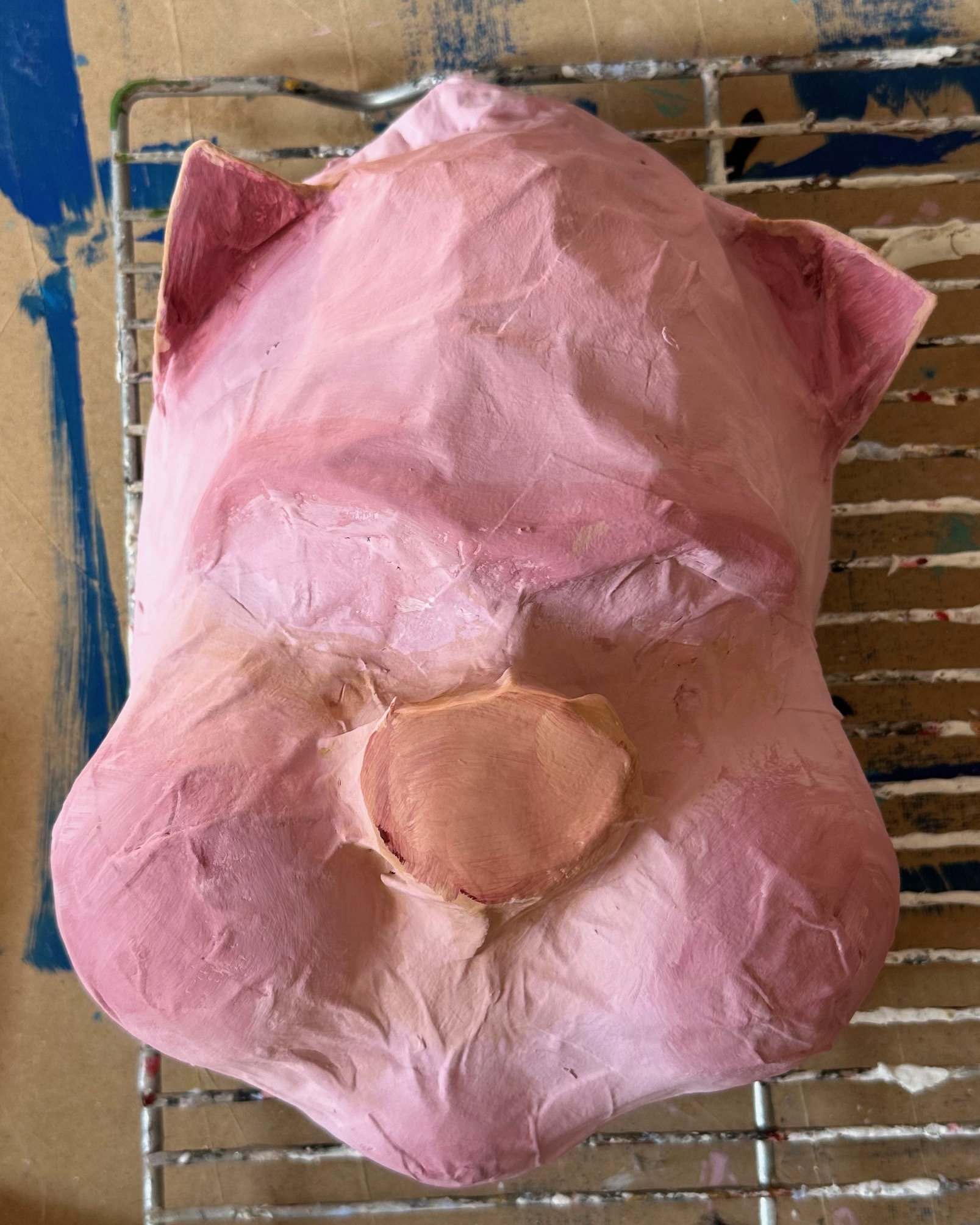I Know Chaos
Charlie Welch
I Know Chaos, Self-portrait and written piece, 8 x 10 inches
“I feel like [this] is more than an 8x10 printed image. It’s a sculpture and it’s performative too.”
Interview by C. VanWinkle
March 26, 2024
What was the prompt that you responded to? Can you describe it for me?
It took me a while to see it fully. At first it just looked like a painting, like a watercolor. But then I saw stitching around the edges. And then I looked deeper, and I could see that it was on clear vinyl or something that looked like it was woven through. It was really interesting. And I really liked all the colors. My kitchen is actually similar colors to what was in the painting, so I really felt drawn by that, too.
What did you think of it?
The first thing, which kind of came in the text, was a sense of chaos. But because of the colors, there was also some harmony and beauty, so it wasn't necessarily bad chaos. The motion in it I was really drawn to as well. But I was able to be still in parts of it. Kind of very Zen.
So how did you go from there to starting your own piece?
When I start a new project, it feels somewhat random. I was looking at the painting and my mind just started to wander. I've been doing a lot of work making papier-mâché masks and taking self-portraits with them. That was already in my head because that's what I've been doing this past year, and then for some reason I started imagining a pig-like creature and I don't really know why. It might have been that some of the shapes in there look a little bit like snouts or something. I don’t know.
Then I decided, “Well, let me just go with this. Let me just make a pig mask and see what happens.” At first, I wasn’t going to make an actual pig. It was going to be more of an amorphous blob mask. But then as I kept working on it, I started focusing more on making a pig, though I’m not really sure why. I tried incorporating some of the colors and shapes in the mask, and during this process, the text started coming to me as well. I started writing down notes, and then didn’t look at it for a while, and then came back to it. The way it all came about was very Dada. There was no real focus, like “Oh, this is what I’m gonna do.” I just started doing it and let the process dictate what the end result would be.
As you might guess from the nature and structure of this project, we're down with Dada. I was wondering if the image or the text came first, or if they developed together.
I started with the image, but about the same time, the text started coming as well. And I did a couple different drafts of it. First, it was just one sentence, but it felt like it needed more. It is a little bit of a personal history, but I didn't want it to be so specific. I don't know, it all just kind of flowed together in the end.
I like that. There's a hint of a story happening there and I think that's really interesting too.
I’ve recently started writing some short stories, which I hadn't really done since I was in college. They are kind of autobiographical, and some are three paragraphs and some are six pages. So maybe that's part of why the text came into play too. Similar to the mask-making, it's something that’s already in my head from other work that I'm doing. These two just seemed like a good combination.
It’s sounding like you go through phases working with different materials or in different ways. Do you tend to mix it up and do different stuff pretty regularly?
Yeah, I used to just consider myself a photographer. I would never say that now, even though a lot of my works, like all the masks I make, always result in a photograph. But I feel like the photograph is more than an 8x10 printed image. It's a sculpture and it's performative too. I’ve been playing a lot with more sculptural things. I’ve been doing a lot of collage lately, which for me is even more like Dada. I’ll just sit down, start with some images, and let things happen until I’m done.
That's so cool. I think my favorite genre is “Hard To Categorize,” and your mask series is certainly that.
I find that it’s been very therapeutic as well. I used to wake up every morning, especially during lockdown, and I would do a quick digital collage just from files that I already had on my computer or things I'd find on the internet. I’d spend half an hour in the morning while I was having my coffee and do it. It cleared my head a little bit.
I think that's such a good idea. It’s like when other people might do a crossword puzzle, except you have something to show for it.
Last year, I had an exhibition in New York of the collages that I was making, so it turned into something bigger.
Looking back on the different phases of your work, is there a common thread? Some idea or element that you keep coming back to?
I don’t know. I feel like a lot of my stuff feels pretty nostalgic.
Is this piece a self-portrait? Are these mask pieces necessarily pictures of you?
Most of them, yeah.
Is that something you return to? Are you interested in self-portraiture or autobiography?
Definitely, yes. With the masks I made last year, I'd just think, “Oh, let me start making something.” And then as I'm making it, I’d realize what I'm making. I don't set out to do anything in particular, and then I realize, “Okay, this makes sense to me now.” A lot of them are very autobiographical. I had a show down in Maryland last fall, which centered around mental health a little bit, you know, being in the world right now with everything that's going on.
Oh that’s so relatable. I don’t know anyone who’s okay. Do you know what's next for you? What the next phase might be?
I'm still exploring papier-mâché masks. I actually have a grand plan; I would love to do a huge papier-mâché installation. I’d do an interior of some kind of fabricated home. Actually, that’s one thing a lot of my work has centered around: the idea of home and what a home is. Whether it's something that's constructed, that you're living in, or if it's your state of mind. So I've been wanting to do this big installation, and I actually thought about doing a performative piece. If I had a space for a month, I could build it and live in it and maybe set up some cameras. For the entire month, living in this space and covering it in papier-mâché. Not even necessarily making furniture and stuff, just playing and making crazy things. That's a fantasy of mine.
Awesome! I like that idea that a home doesn't necessarily have to look like the interior of a house. If it’s YOUR home, it can be anything, can’t it? One more question. Now that you’re on this side of our process, what's your advice to a new contributor who's getting their prompt today?
Be open with how you interpret it. Like with anything, don't think about being necessarily literal. I did a collage workshop in New York and I gave people prompts for their collages, and no one really understood. They felt that they had to do a literal interpretation of the word I gave them. And I said, “No, this is just a word for you to think about, and maybe you could even make something 180 degrees in the other direction. It's just something to get your brain moving.” So I would say to be open and free with whatever your prompt is. Interpret it personally, as opposed to what might be physically in front of you.
Call Number: B113VA | B115VA.weI
Charlie Welch’s constructs environments and playful sets which convey narratives about identity formation, public and private selves, and how we navigate daily life. His primary focus is photography, and within that it often includes sculpture, collage, and a performative nature. He is a co-founder of the NY Queer Zine Fair and was a part of the Queer Action Figures collective, and now lives in Philadelphia. charliewelch.com, charliefwelch.bsky.social.








